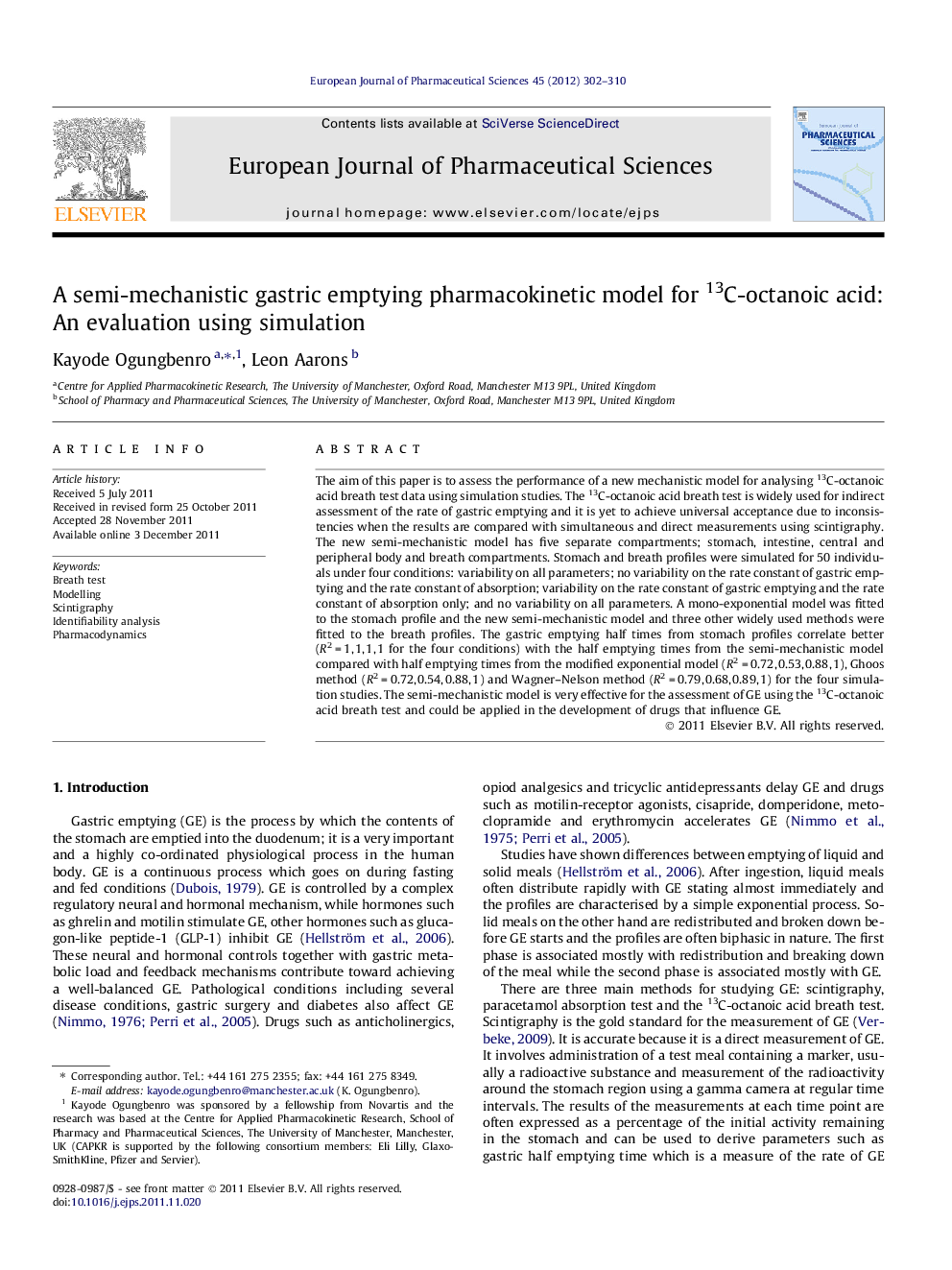| Article ID | Journal | Published Year | Pages | File Type |
|---|---|---|---|---|
| 2480770 | European Journal of Pharmaceutical Sciences | 2012 | 9 Pages |
The aim of this paper is to assess the performance of a new mechanistic model for analysing 13C-octanoic acid breath test data using simulation studies. The 13C-octanoic acid breath test is widely used for indirect assessment of the rate of gastric emptying and it is yet to achieve universal acceptance due to inconsistencies when the results are compared with simultaneous and direct measurements using scintigraphy. The new semi-mechanistic model has five separate compartments; stomach, intestine, central and peripheral body and breath compartments. Stomach and breath profiles were simulated for 50 individuals under four conditions: variability on all parameters; no variability on the rate constant of gastric emptying and the rate constant of absorption; variability on the rate constant of gastric emptying and the rate constant of absorption only; and no variability on all parameters. A mono-exponential model was fitted to the stomach profile and the new semi-mechanistic model and three other widely used methods were fitted to the breath profiles. The gastric emptying half times from stomach profiles correlate better (R2 = 1, 1, 1, 1 for the four conditions) with the half emptying times from the semi-mechanistic model compared with half emptying times from the modified exponential model (R2 = 0.72, 0.53, 0.88, 1), Ghoos method (R2 = 0.72, 0.54, 0.88, 1) and Wagner–Nelson method (R2 = 0.79, 0.68, 0.89, 1) for the four simulation studies. The semi-mechanistic model is very effective for the assessment of GE using the 13C-octanoic acid breath test and could be applied in the development of drugs that influence GE.
Graphical abstractFigure optionsDownload full-size imageDownload as PowerPoint slide
